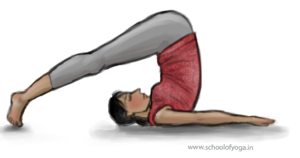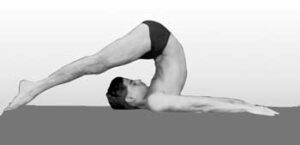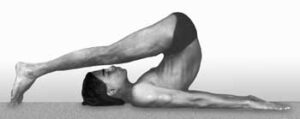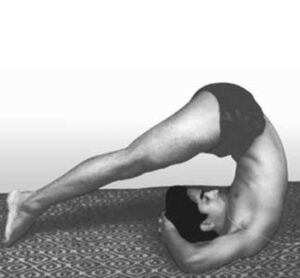Post By: Vishwanath Iyer Published on: December 16, 2016 Reading time: 4 minutes
 What is halāsana (plough pose)?
What is halāsana (plough pose)?Halāsana is an advanced āsana. Here, the practitioner takes the legs over the face and stretches as far back as possible. Importantly, since there are many chances of mistakes, this āsana should be learned under supervision.

Yogacharya Sundaram demonstrating the perfect halāsana (around early 1920)

Yogacharya Sundaram demonstrating an intermediate position of halāsana
Internal Links: Dharma (conditioning), Stress and Situational Awareness, Prana, Asana sequence, Asana schedule, Asana Focus or gazing, Pranayama, Hatha Yoga Pradeepika
External Links: Prana, Chakra, Pancha Tattva, Pancha Prana, Pancha Kosha, Nadi,

Sundaramadhavan demonstrating halāsana
While this exercise is very good for energizing the endocrine system, those with cervical or lumbar spondylosis should avoid this exercise completely.